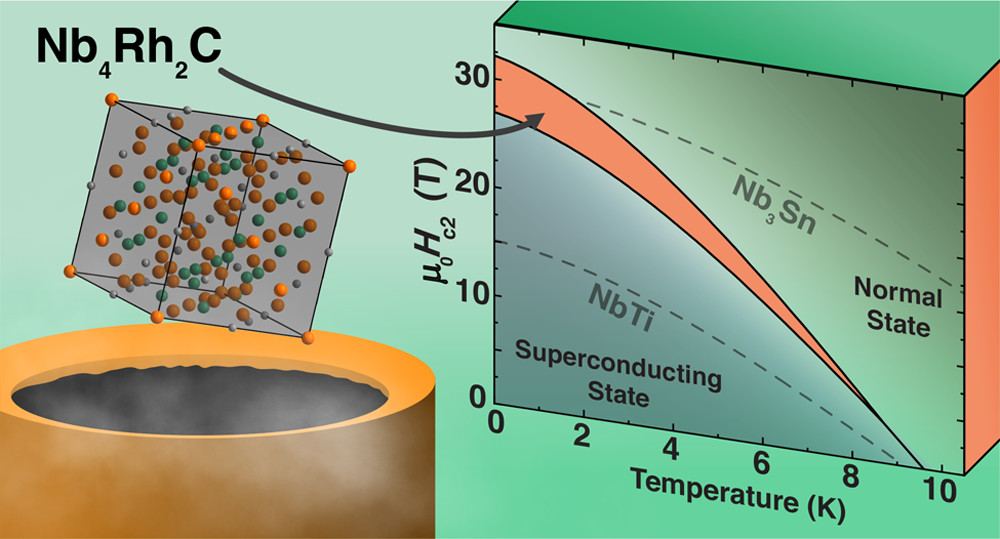Superconductivity with High Upper Critical Field in the Cubic Centrosymmetric η-Carbide Nb4Rh2C1−δ

The upper critical field is a fundamental measure of the strength of superconductivity in a material. It is also a cornerstone for the realization of superconducting magnet applications. The critical field arises because of the Cooper pair breaking at a limiting field, which is due to the Pauli paramagnetism of the electrons. The maximal possible magnetic field strength for this effect is commonly known as the Pauli paramagnetic limit given as μ0HPauli ≈ 1.86[T/K]·Tc for a weak-coupling Bardeen–Schrieffer–Cooper (BCS) superconductor. The violation of this limit is only rarely observed. Exceptions include some low-temperature heavy Fermion and some strongly anisotropic superconductors. Here, we report on the superconductivity at 9.75 K in the centrosymmetric, cubic η-carbide-type compound Nb4Rh2C1−δ, with a normalized specific heat jump of ΔC/γTc = 1.64. We find that this material has a remarkably high upper critical field of μ0Hc2(0) = 28.5 T, which is exceeding by far its weak-coupling BCS Pauli paramagnetic limit of μ0HPauli = 18.1 T. Determination of the origin and consequences of this effect will represent a significant new direction in the study of critical fields in superconductors.
KeYuan Ma, Karolina Gornicka, Robin Lefèvre, Yikai Yang, Henrik M. Rønnow, Harald O. Jeschke, Tomasz Klimczuk, and Fabian O. von Rohr
ACS Mater. Au 2021, 1, 1, 55–61